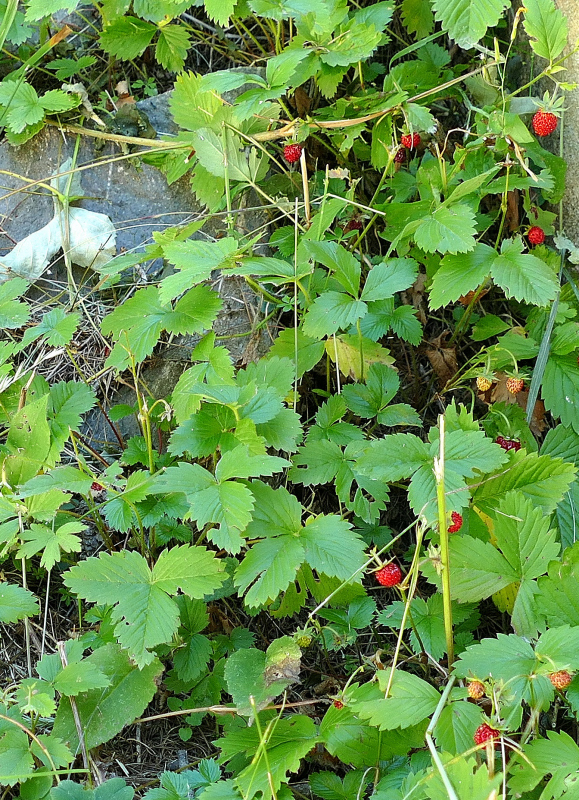Tiiips app: ingredients detective.
Free from Play Store!


Tiiips app: ingredients detective.
Free from Play Store!


| "Descrizione" by Handy23 (4269 pt) | 2023-Oct-12 12:50 |
| Evaluation | N. Experts | Evaluation | N. Experts |
|---|---|---|---|
| 1 | 6 | ||
| 2 | 7 | ||
| 3 | 8 | ||
| 4 | 9 | ||
| 5 | 10 |
Strawberry (Fragaria) is an evergreen climbing plant that reaches 20 cm in length, the fruit is highly perishable and has a short duration due to a degradation of the cell wall in the last stages of maturation.

It belongs to the Rosaceae family.
There are:
It adapts to almost all terrain and likes places not completely exposed to the sun. It withstands the cold well.
Commercial applications:
Diet and Cooking. Strawberries are used in a wide range of culinary preparations, including desserts, ice creams, jams, and even in salads or as toppings. They are also eaten fresh as a snack or dessert.
Agriculture. Strawberry cultivation requires attention to soil, water conditions, and pest control and is practiced in many regions worldwide, enjoying popularity for both local consumption and export.
Food Industry. Strawberries are used to produce a variety of processed products, including juices, jams, ice creams, and baked goods.
Health Benefits. Strawberries are rich in vitamins, minerals, and antioxidants, and have anti-inflammatory and cardio-protective properties.
Studies
Strawberry contain a wide range of nutrients which contribute to human health such as the content of carotenoids in the pulp (1) :
It also contains natural and phytochemical compounds with antibacterial and antioxidant activities. It is also a source of carbohydrates, soluble dietary fibre, and polyunsaturated fatty acids (2).
Natural food prevention based on nutrition offers significant cancer prevention effects with rather low toxicity. In a series of pre-clinical and clinical studies, strawberry was chosen as a food-based intervention because it demonstrated powerful prevention activities with anti-inflammatory and anticancer activities attributable to anthocyanins (3).
Tiliroside, a flavonoid present in significant amounts in strawberry , has been shown to suppress increased levels of post-prandial plasma glucose. This finding reveals the anti-diabetic activity of strawberry (4).
References________________________________________________
(1) Swada JG, Keeley CJ, Ghane MA, Engeseth NJ Relationship between pulp structure breakdown and nutritional value of papaya (Carica papaya) and strawberry (Fragaria x ananassa) nectars using alternative thermal and non-thermal processing techniques.. J Sci Food Agric. 2016 May;96(7):2514-23. doi: 10.1002/jsfa.7372. Epub 2015 Sep 21. PMID: 26250848.
(2) Dias MI, Barros L, Morales P, Cámara M, Alves MJ, Oliveira MB, Santos-Buelga C, Ferreira IC. Wild Fragaria vesca L. fruits: a rich source of bioactive phytochemicals.
Food Funct. 2016 Nov 9;7(11):4523-4532. doi: 10.1039/c6fo01042c.
Abstract. Wild Fragaria vesca L. fruits were studied regarding nutritional and phytochemical compounds, and also antioxidant, antibacterial and biofilm formation inhibition activities. The fruits are good sources of carbohydrates (e.g., sucrose), soluble dietary fiber and polyunsaturated fatty acids, mainly linoleic and linolenic acids, as well as other components such as citric and succinic acids, and vitamins B9 and E (mainly γ-tocopherol). Significant amounts of soluble sugars, citric acid and some amounts of ascorbic acid, vitamins B9 and E (only α-tocopherol) were found also in the infusions. The hydromethanolic extracts revealed higher amounts of phenolic compounds, mainly ellagic acid derivatives and dihydroflavonol taxifolin-3-O-arabinofuranoside. Consistently, these extracts also showed higher antioxidant and antibacterial activities than the infusions, and were able to inhibit the formation of bacterial biofilms. Despite the lower content of bioactive compounds in the infusions compared to the fruits, both forms could be potentially applied in functional foods and/or nutraceuticals/pharmaceutical formulations.
(3) Chen T, Shi N, Afzali A. Chemopreventive Effects of Strawberry and Black Raspberry on Colorectal Cancer in Inflammatory Bowel Disease. Nutrients. 2019 Jun 3;11(6). pii: E1261. doi: 10.3390/nu11061261.
Abstract. Colorectal cancer (CRC) remains the third most common cause of cancer-related death in the United States and the fourth globally with a rising incidence. Inflammatory bowel disease (IBD) is a chronic immunologically mediated disease that imposes a significant associated health burden, including the increased risk for colonic dysplasia and CRC. Carcinogenesis has been attributed to chronic inflammation and associated with oxidative stress, genomic instability, and immune effectors as well as the cytokine dysregulation and activation of the nuclear factor kappa B (NFκB) signaling pathway. Current anti-inflammation therapies used for IBD treatment have shown limited effects on CRC chemoprevention, and their long-term toxicity has limited their clinical application. However, natural food-based prevention approaches may offer significant cancer prevention effects with very low toxicity profiles. In particular, in preclinical and clinical pilot studies, strawberry and black raspberry have been widely selected as food-based interventions because of their potent preventive activities. In this review, we summarize the roles of strawberry, black raspberry, and their polyphenol components on CRC chemoprevention in IBD.
(4) Goto T, Horita M, Nagai H, Nagatomo A, Nishida N, Matsuura Y, Nagaoka S. Tiliroside, a glycosidic flavonoid, inhibits carbohydrate digestion and glucose absorption in the gastrointestinal tract. Mol Nutr Food Res. 2012 Mar;56(3):435-45. doi: 10.1002/mnfr.201100458.
| Evaluate |